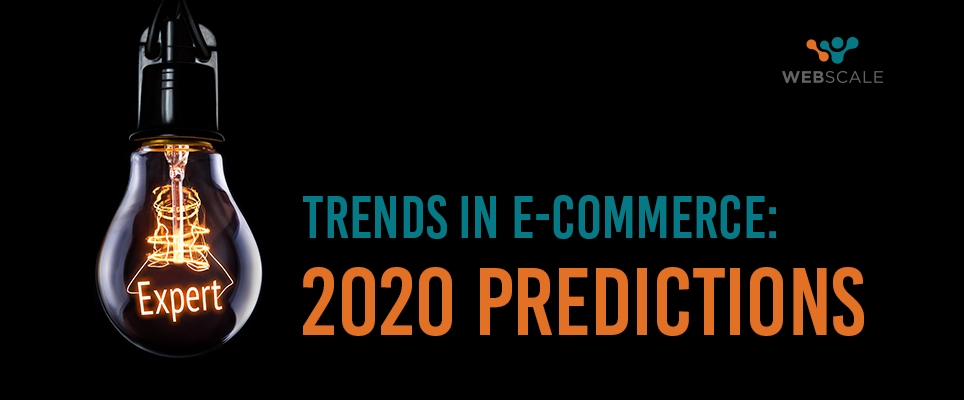The last decade has been a spectacular one for e-commerce.
Global e-commerce revenues grew more than 500% between 2010 and 2019. Amazon continues to have the lion’s share of the trillion dollar industry with more than $200 billion in annual revenue. Consumers spent a record-breaking $9.4 billion on Cyber Monday this year, making it the largest online shopping day ever!
Small and large e-commerce merchants alike adopted the cloud almost universally, for their backend infrastructure, and mid-market brands are catching up quickly. Mobile commerce continues to grow at an exponential pace – 45% of all online sales on Thanksgiving Day in the U.S., happened on mobile devices. Technologies like augmented reality, virtual reality, and voice-enabled search also saw increased market adoption.
The last decade also witnessed some of the largest cyber-attacks and data breaches in history. Marriott International, eBay, Target, Uber, Home Depot, and Adobe were some of the large brands compromised. We also saw Adobe acquire Magento, whose e-commerce platform enabled hundreds of thousands of digital commerce brands to be successful with its powerful and customizable software and unparalleled developer and community support.
Overall, e-commerce continues to be one of the most exciting industries to be in. I know we’re all aching to see what the new year will bring. So we asked a few top developers to share their predictions for e-commerce in 2020. Here’s what they had to say:

Joe Rollinson
CEO, Best Worlds
LinkedIn
“I expect PWA to continue to be a very big talking point in ecommerce. We feel like customer lifecycle marketing and optimization testing are the two areas our clients should be investing in.”
“For 2020, we believe that more money is going to be used to promote products and services on social media and create flexible payment options for consumers. Social media is huge for promoting products with ads and “influencers” in order to generate more sales, especially with younger consumers.
The technologies that we see being used more in 2020, are from companies like Afterpay, Sezzle, and Affirm, giving consumers flexible payment options (buy now, pay later). These companies are able to give the consumer more buying power because they can purchase a higher priced item, or more of a specific item if they’re buying in bulk. These “buy now, pay later” technologies are increasing average sales and average order size for merchants.”

JP Underhill
Director of Customer Success, Binary Anvil
LinkedIn

David Baier
Managing Partner, Crimson Agility
LinkedIn
“In 2020, B2B digital transformation will continue to gain momentum. Many smaller distributors and manufacturers are taking advantage of the relative ease of offering state-of-the-art B2B capabilities online. This provides them the opportunity to take market share from their larger competitors who are struggling to make the same transitions. In light of this, more and more distributors and manufacturers, large and small, are investing in their own B2B digital transformations.
The growing demand for consultants and development services will require increasingly innovative solutions to the unique challenges of B2B commerce. The evolution of Magento under Adobe will position Magento as the leading platform for B2B. At Crimson Agility, we customize Magento to create innovative solutions for complex B2B challenges resulting in growth, customer loyalty, and market leadership for our clients.”
“Big changes don’t usually happen in one year. So, not just 2020, but the next couple of years will be a big shift in the way websites are built and marketed.
We’ve heard the sales hype of “headless” eCommerce and Progressive Web Apps (PWA) for at least two years now. I don’t think we are going to see the full promise of that technology/methodology shift for a few more years. However, 2020 will be the year that the tooling is mature and readily available enough to begin lowering the level of effort for building a PWA. This will make it a more widely accessible option for a lot of merchants.
For years, merchants have been able to utilize social media advertising to drive traffic to their website. As more social platforms start to introduce eCommerce capabilities much like Instagram has done, we’ll start to see them incentivize merchants to use their native functionality. I expect that to be a subtle urge to start with, but over time you’ll see increasing benefits in advertising rates and capabilities for transactions that happen in their platforms.”
“We think 2020 will be the year of the “optimized checkout.” The ecommerce industry spends untold (and perhaps, even unspeakable) amounts of time and money on the “homepage-to-checkout” customer experience, which is important, of course.
But are we spending enough time on checkout itself?
There are infinite variations of the on-site customer journey, and as an industry we will always be crusading to create/discover the UX Holy Grail. Checkout itself, however, has fewer “moving parts” than the rest of the site, and as such, though there may never be a “one-size-fits-all” checkout, we think 2020 will get us much closer and might even give us “small, medium, and large” optimal checkout experiences (for lack of a more elegant metaphor).
If 2020 unfolds as the Year of the Optimal Checkout, all those in-cart/checkout technologies will take center stage – from address auto-complete/validation, to sales tax calculation/filing, to fraud prevention/protection, to financing options, to shipping platforms, to payment gateways, and beyond. We think this set will be the “It” technologies of 2020.”
“Undoubtedly, mobile sales will increase. Headless commerce and PWA will improve shopping experience tremendously and impact small and big players alike.
Voice shopping and augmented reality, which are used by big brands now, will make its way to small brands too. During Singles’ Day, Alibaba witnessed one million sales via voice shopping. It is only a matter of time – voice shopping will be incorporated by most e-commerce businesses.”

Piyush Lathiya
Founder and CEO,Aureate Labs
LinkedIn
“More than 60% of customers visit eCommerce websites from their mobile devices, but conversion is not as good as compared to desktop or native apps – because the overall UX and speed of mobile websites are poor.
In 2020, Progressive Web Apps (PWA) and headless commerce will be the new standard for the web, implementing which, one can create an absolute best experience that reduces friction and increases conversions.
According to the Stack Overflow 2019 survey, JavaScript is the most popular technology – a web framework like ReactJS and VueJS, helps developers to build a powerful frontend. One step ahead, VueStorefront – an open-source PWA framework for eCommerce makes the developer’s life easier in building next-gen PWA, where their current eCommerce technology will stay in the backend.”
Thank you guys for the great insights. And to all you merchants out there, the team here at Webscale wishes you, your families, and your e-commerce storefronts much health and happiness in the coming year!
And, of course, if you run into any issues related to your site’s uptime, performance, or security in the meantime, you know where to find us.

















